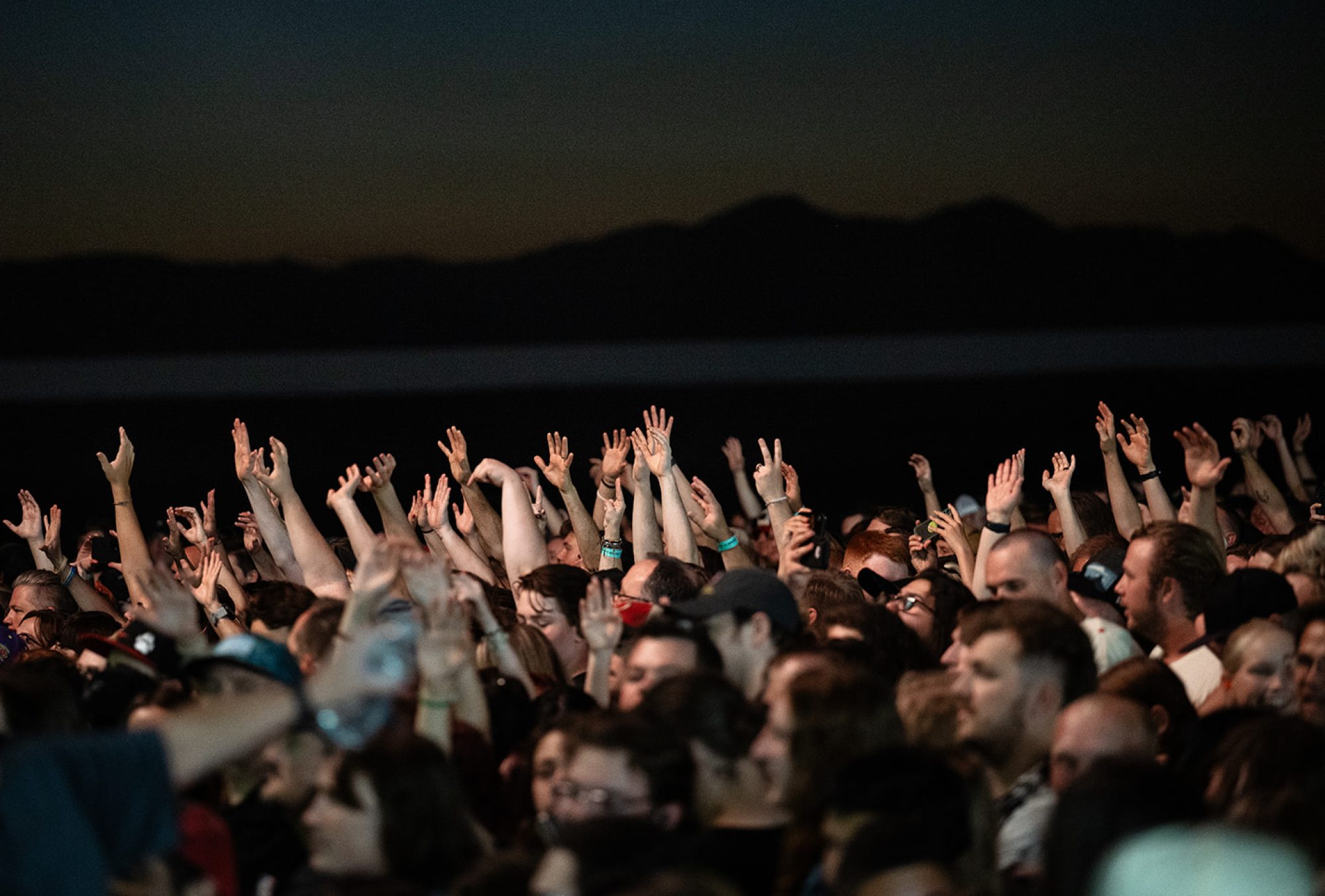By: Katie Barber

With mechanical butterflies flying in circles ethereally on the stage, London-based Honey Harper (aka William Fussell) warmed up the crowd in Salt Lake City for the first time ever. Fussell was accompanied by Mick Mayer on harmony, flute, and keys, Alana Pagnutti on harmony and keys, and bassist Gus Appleberg. The group played a short set that included both released and unreleased tracks, a cover of Jackson Browne’s “These Days,” and a song Fussell told the crowd was loosely inspired by the Genesis album Selling England By the Pound. With a sound excellently true to his records, Fussell’s vocals serenaded on tracks such as “Vaguely Satisfied” and “Secret” as an eager crowd observed the “glam country” presented onstage. At the end of the main set, Honey Harper became a party of one, and the band began to pack up equipment behind Fussell as he launched into a triumphant karaoke-style version of Dusty Springfield’s “You Don’t Have to Say You Love Me,” first taking off his hat and then stripping down to an undershirt, the crowd hooting and howling the whole way.

After this dramatic conclusion, the venue settled down and the crowd’s eagerness was palpable while waiting for Temples to take the stage. The lights suddenly dimmed and something like a mashup of an Indiana Jones theme+a 30’s Mighty Wurlitzer+gothic UFO music filled the space. Drummer Rens Ottink then sat down at his kit and led the rest of the group into “The Howl” from the album Hot Motion, released late last month on ATO records.
Write a prescription for “seventies rock band” and it may include bell bottoms, fringe, platform boots, bangs, and at least shoulder length hair. When Temples appeared on stage, they looked the part—no doubt about it. Their performance, however, was anything but prescriptive. After the resounding cheers that met the end of “The Howl” died down, lead singer and guitarist James Bagshaw told the crowd they were going to play the “OG one.” Satisfied shouts seemed to agree with the song’s status when the band played the first notes of “Certainty,” from their sophomore record Volcano. Rhythm guitarist Adam Smith multitasked on keys and with one’s eyes closed, the Commonwealth Room sounded like it was host to Foster the People, Cage the Elephant, and The Clash all at once.

Bassist Tom Walmsley laid out the rhythm for “You’re Either On Something” and embossed the chorus of “Colours to Life,” which had a 70’s psychedelic rock vibe and a synth that bridged the gap in the time-space continuum between The 5th Dimension and Spendtime Palace. With “Hot Motion” and “The Golden Throne,” Bagshaw set the tone with his guitar by playing it in a way that made the crowd feel like they could take part in the performance too, leaning out into the audience with each solo. Before the next song, he told attendees that the group would require complete silence. When you could have heard a pin drop, they began “Atomise.” Live, the song truly was business in the front and party in the back, with a controlled slow burn that lasted a few moments before the group took a more intimidating turn.

Bagshaw’s subtle dedication to putting on a quality show was highlighted with his between-song banter, occasionally alluding to the band’s song titles in his obligatory anecdotes. He did this to lead the group into “Context,” which spotlighted the whole group’s instrumental talent and lyrical quality: Fool carry the wise / Are you divine? / Fool carry the wise / Are you afraid of being defined? / When you put it in context it makes sense. A single “f*ck yeah!” from the audience amongst the applause after the song ended encouraged Bagshaw to mention the lack of such a response from English crowds—by the time the group had finished “The Beam” and “Oh the Saviour,” most of the audience had made it known they weren’t English. Between the “The Beam’s” distinct nod to 70s counterculture supplied by Walmsley’s echoing vocals and “Oh the Saviour’s” resonating rhythms, inescapably catchy chorus, and wicked electric twang, “f*ck yeah” really did seem like the only appropriate reaction.
Following “Keep in the Dark” from their first record Sun Structures (which was punctuated with some headbanging provided by Ottink), the whole crowd reacted with hands in the air and approving shouts to Bagshaw’s playing to begin “Shelter Song.” Take a little Cage the Elephant from before, mix in a bit of the Everly Brothers, add a dash of The Monkees, and you might have something that comes close to “Shelter Song.” Even though the audience clearly would have been satisfied with a set that ended there, Temples then played “Holy Horses,” off of Hot Motion, before exiting the stage.

The room filled with a chant of “PLAY MORE SONGS,” with claps accompanying the words. Suddenly there was a rhythmic sound that mixed in with the chant as if the claps were being looped from the audience and over the speakers. When the band reappeared and the clapping changed rhythm, it became clear that this sound was actually the recorded introduction to their encore, beginning with “A Question Isn’t Answered.” The group took full advantage of the room’s energy, with Smith taking up a tambourine and Bagshaw turning the mic stand towards the audience, inviting them to sing along. Temples then pivoted to “Mesmerize,” with Walmsley structuring the bassline to accompany Bagshaw’s vocals and keep a steady beat for the entire duration of the song. He led the way for what turned into a ten-minute rendition of the recorded three-minute track. Bagshaw and Smith roamed around the stage minutes 4 through 6 before launching into a rock and roll breakdown that relied only on the synchronicity of the instruments and the shouts of the crowd to finish out the night.
Temples can be summed up in three words: do not miss.
